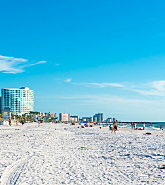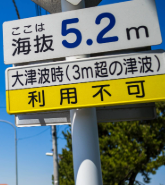When disaster strikes for homeowners and businesses the insurance industry is a source of funds to pick up the pieces and carry on. In that way the industry provides an immediate benefit to society. But can insurers play an extended role in helping to reduce the risks for which they provide cover, to make society more resilient to the next disaster?
Insurers collect far more detailed and precise information on property damage than any other public sector or private organisation. Such claims data can provide deep insights into what determines damage – whether it’s the vulnerability of a particular building type or the fine scale structure of flood hazard.
While the data derived from claims experience helps insurers to price and manage their risk, it has not been possible to apply this data to reduce the potential for damage itself – but that is changing.
At a recent Organisation for Economic Co-operation and Development meeting in Paris on flood risk insurance we discussed new initiatives in Norway, France and Australia that harness and apply insurers’ claims experience to inform urban resilience strategies.
Norway Claims Data Improves Flood Risk
In Norway the costs of catastrophes are pooled across private insurance companies, making it the norm for insurers to share their claims data with the Natural Perils Pool. Norwegian insurers have collaborated to make the sharing process more efficient, agreeing a standardized approach in 2008 to address-level exposure and claims classifications covering all private, commercial and public buildings. Once the classifications were consistent it became clear that almost 70% of flood claims were driven by urban flooding from heavy rainfall.
Starting with a pilot of ten municipalities, including the capital Oslo, a group funded by the Norwegian finance and insurance sector took this address-level data to the city authorities to show exactly where losses were concentrated, so that the city engineer could identify and implement remedial actions: whether through larger storm drains or flood walls. As a result flood claims are being reduced.
French Observatory Applies Lessons Learned from Claims Data
Another example is from France, where natural catastrophe losses are refunded through the national ‘Cat Nat System’. Property insureds pay an extra 12% premium to be covered. All the claims data generated in this process now gets passed to the national Observatory of Natural Risks, set up after Storm Xynthia in 2010. This unit employs the data to perform forensic investigations to identify what can be learnt about the claims and then works with municipalities to see how to apply these lessons to reduce future losses. The French claims experience is not as comprehensive as in Norway because such data only gets collected when the state declares there has been a ‘Cat Nat event’ – which excludes some of the smaller and local losses that fail to reach the threshold of political attention.
Australian Insurers Forced Council to Act on Their Claims Data
In Australia sharing claims data with a city council was the result of a provocative action by insurers which were frustrated by the political pressure to offer universal flood insurance following the major floods in 2011. Roma, a town in Queensland, had been inundated five times in six years – insurers mapped and published the addresses of the properties that had been repeatedly flooded and refused to renew the insurance cover unless action was taken. The insurers’ campaign achieved its goal, pressuring the local council to fund flood alleviation measures across the town.
These examples highlight how insurers can help cities identify where their investments will accomplish the most cost-effective risk reduction. All that’s needed is an appetite to find ways to process and deliver claims data in a format that provides the key insights that city bosses need, without compromising concerns around confidentiality or privacy.
This is another exciting application in the burgeoning new field of resilience analytics.






